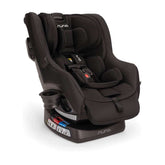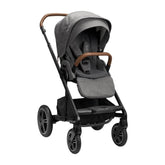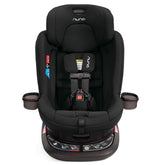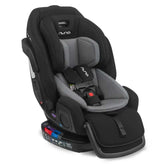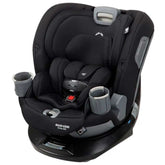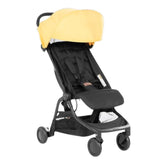How to Create a Relaxing Bedtime Routine for Your Baby

Establishing a consistent and soothing bedtime routine for your baby can transform nighttime chaos into a peaceful and restful experience for both you and your little one. A well-structured bedtime routine not only helps your baby feel secure and loved but also fosters healthy sleep habits that can last a lifetime. This ANB Baby guide will walk you through the steps to create a calming bedtime routine, from the ideal sleep environment to relaxing activities, ensuring that your baby drifts off to sleep with ease every night.
Establishing a Baby Bedtime Routine
Creating a bedtime routine for your baby involves more than just putting them to bed at a specific time each night. It's about establishing a predictable series of events that signal to your baby that it's time to wind down and prepare for sleep.
Setting a Consistent Bedtime: The Importance of Keeping to the Schedule
Consistency is crucial when it comes to bedtime routines. Babies thrive on predictability, and a regular bedtime helps regulate their internal clock, making it easier for them to fall asleep and wake up at the same time each day. Aim to start your baby's bedtime routine at the same time every evening, even on weekends.
Choosing the Right Bedtime: At What Age Do Babies Have a Bedtime Routine?
The optimal bedtime for your baby depends on their age and nap schedule. According to the American Academy of Pediatrics (AAP), newborns sleep up to 16-17 hours a day, including naps, while older babies (4-12 months) need around 12-16 hours of sleep, including naps. Pay attention to your baby's natural sleep cues, such as rubbing their eyes or becoming fussy, and adjust the bedtime accordingly.

Calming Activities to Wind Down: How Can I Get My Baby to Relax Before Bed?
Incorporating calming activities into your baby's bedtime routine can help signal that it's time to transition from the busyness of the day to a more peaceful, sleep-friendly state.
Bath Time
A warm bath can be a soothing way to end the day. The change in body temperature after the bath can help your baby feel sleepy. Use gentle, fragrance-free baby soap and ensure the water temperature is comfortable. A short, 10-15 minute bath is usually sufficient. ANB Baby offers a wide selection of bathtime supplies for your little one.
Gentle Massage
After the bath, a gentle massage with baby lotion can further relax your baby. According to research published in the Journal of Neonatal Nursing, baby massage can help improve sleep quality, reduce crying, and strengthen the parent-baby bond. Use slow, gentle strokes and talk softly, or sing to your baby to create a calming atmosphere. You'll find a variety of baby-safe skincare products at ANB Baby.
Story Time
Reading to your baby is a wonderful bedtime activity. Choose books with soothing rhythms and repetitive language to help lull your baby to sleep. According to Nemours Children's Health, reading to babies supports language development and helps build a strong emotional connection. Browse ANB Baby's wide selection of books for all ages.
Soft Music or Lullabies
Playing soft music or singing lullabies can also help create a peaceful bedtime environment. The calming effects of music can help lower stress and anxiety levels, making it easier for your baby to fall asleep. You can find a variety of lullaby playlists on music streaming services or create your own. Check out the selection of Tonies audio players and figurines at ANB Baby.
Cuddling and Rocking
Spending a few minutes cuddling or rocking your baby can provide comfort and security. The gentle rocking motion mimics the sensations your baby felt in the womb, promoting relaxation and sleepiness. A rocking chair or glider from ANB Baby can be a valuable addition to your nursery setup.

Creating the Ideal Sleep Environment
A conducive sleep environment is essential for helping your baby fall asleep and stay asleep. Consider the following elements when setting up your baby's sleep space.
Optimal Room Temperature
Keeping your baby's room at a comfortable temperature is important for promoting restful sleep. The AAP recommends maintaining a room temperature between 68-72°F (20-22°C) to prevent overheating and ensure your baby is comfortable. Use a room thermometer to monitor the temperature and adjust it as needed.
Darkness and Quiet
A dark, quiet room can help signal to your baby that it's time to sleep. Use blackout curtains or shades to block out external light and consider using a white noise machine to mask household noises that could disturb your baby. White noise can create a consistent background sound that helps soothe your baby and drown out sudden, disruptive noises. See ANB Baby's range of soothing sounds and white noise machines.
Safe Sleep Practices
Ensuring your baby sleeps safely is paramount. Follow the AAP's guidelines for safe sleep, which include placing your baby on their back to sleep, using a firm mattress with a fitted sheet, and keeping the crib free of pillows, blankets, and stuffed animals. A wearable blanket or sleep sack can keep your baby warm without the risk of suffocation.
Comfortable Crib Bedding
Investing in high-quality crib bedding can enhance your baby's comfort and promote better sleep. Look for breathable, hypoallergenic materials that are gentle on your baby's skin. The ANB Baby website offers a wide range of crib bedding options designed to provide a safe and cozy sleep environment for your little one.

The Importance of Consistency
Consistency is the cornerstone of an effective bedtime routine. Sticking to the same activities in the same order each night helps your baby understand what to expect, reducing anxiety and resistance to bedtime.
Establishing a Routine: How Long Does It Take for a Baby to Get Used to a Bedtime Routine?
Start by creating a simple, repeatable routine that includes calming activities and a consistent bedtime. Write down the steps of your routine and follow them every night. Over time, your baby will begin to recognize and anticipate the sequence of events, making the transition to sleep smoother.
Adapting to Changes
While consistency is important, it's also essential to be flexible and adapt your routine as needed. If your baby is sick, teething, or going through a developmental milestone, their sleep patterns may change temporarily. Be patient and adjust your routine to accommodate these changes while maintaining the overall structure.

Encouraging Self-Soothing
Teaching your baby to self-soothe is a valuable skill that can help them fall asleep independently and return to sleep if they wake up during the night.
Gradual Withdrawal
Gradual withdrawal is a gentle method for encouraging self-soothing. Start by staying close to your baby as they fall asleep, then gradually move further away over several nights until they can fall asleep on their own. This approach can help build your baby's confidence and reduce their reliance on your presence to fall asleep.
Comfort Objects
Introducing a comfort object, such as a soft blanket or a favorite stuffed animal, can provide your baby with a sense of security. Ensure the comfort object is safe and appropriate for your baby's age. A comfort object can become a familiar and reassuring part of your baby's bedtime routine.
Shop ANB Baby for Your Nursery and Bedtime Needs
Creating a relaxing bedtime routine for your baby is an investment in their well-being and your peace of mind. By establishing a consistent routine, incorporating calming activities, and creating the ideal sleep environment, you can help your baby develop healthy sleep habits that will benefit them for years to come.
At ANB Baby, we understand the importance of a good night's sleep for both babies and parents. Our extensive selection of nursery and bedtime supplies, from crib bedding to white noise machines, is designed to help you create the perfect sleep environment for your little one. Visit our website today to explore our range of high-quality products and make bedtime a peaceful and enjoyable experience for your family.

